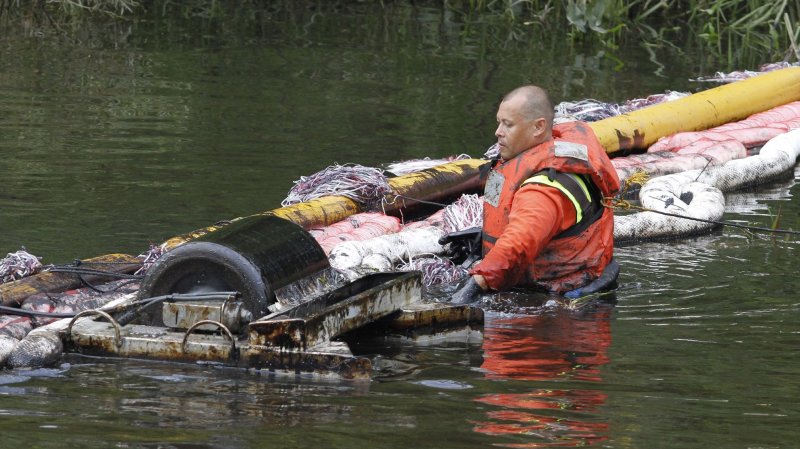A worker tends to an oil boom on the Kalamazoo River near Battle Creek, Michigan on July 30, 2010. A 30-inch-diameter pipeline ruptured sending between 800,000 and 1 million gallons of oil into nearby Talmadge Creek and the Kalamazoo River. UPI/Brian Kersey |
License Photo
WASHINGTON, July 11 (UPI) -- Trade group API said it was working to enhance pipeline safety measures after federal regulators found a 2010 oil spill in Michigan could've been prevented.
The National Transportation Safety Board said a fault on Line 6B of the Lakehead oil pipeline system in Michigan was mischaracterized by pipeline company Enbridge in 2005. Had it been properly assessed, the regulator said, a 2010 oil spill in Marshall, Mich., may have been averted.
Peter Lidiak, pipeline director for the American Petroleum Institute, said the industry was working on ways to improve its safety record.
"A number of industry safety enhancement initiatives are underway that include improving recognition of, response to and reporting of large ruptures," he said in a statement.
Investigators found a 6-foot tear in the section of pipeline that burst in Michigan.
Enbridge, in its response, said it believed its operators were acting appropriately. Stephen Wuori, president of pipeline operations, said the company is reviewing the NTSB probe.
"Safety has always been core to our operations," he said in a statement.
An NTSB official suggested Enbridge was able to exploit "weak" regulations embraced by the Pipeline and Hazardous Materials Safety Administration.
The 2010 spill released about 20,000 barrels of so-called tar sands oil into the Kalamazoo River.















